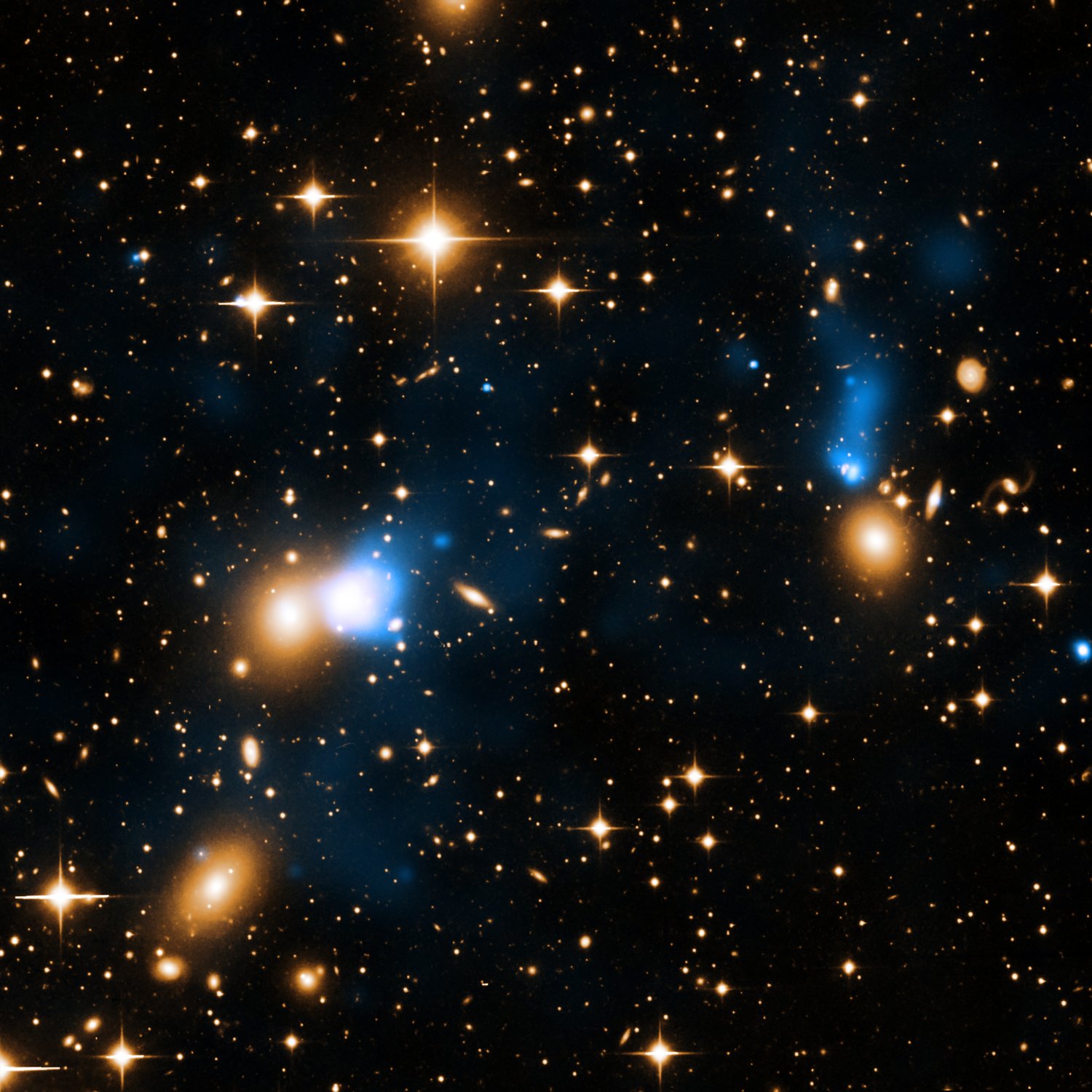MessageToEagle.com – An extraordinary ribbon of hot gas trailing behind a galaxy like a tail has been discovered using data from NASA’s Chandra X-ray Observatory.
This ribbon, or X-ray tail, is likely due to gas stripped from the galaxy as it moves through a vast cloud of hot intergalactic gas. With a length of at least 250,000 light years, it is likely the largest of such a tail ever detected!
- The tail is located in the galaxy cluster Zwicky 8338, which is almost 700 million light years from Earth.
- The length of the tail is more than twice the diameter of the entire Milky Way galaxy.
- The tail contains gas at temperatures of about ten million degrees, about twenty million degrees cooler than the intergalactic gas, but still hot enough to glow brightly in X-rays that Chandra can detect.

The researchers think the tail was created as a galaxy known as CGCG254-021, or perhaps a group of galaxies dominated by this large galaxy, plowed through the hot gas in Zwicky 8338. The pressure exerted by this rapid motion caused gas to be stripped away from the galaxy.
Galaxy clusters are the largest structures in the Universe held together by gravity. They consist of hundreds, or even thousands, of galaxies, enormous pools of hot gas, and vast amounts of unseen dark matter.
“Since galaxy clusters are so enormous, they play a critical role in understanding how our Universe evolves,” said Gerrit Schellenberger of the University of Bonn in Germany, who led the study.
“To understand galaxy clusters we need to understand how their galaxies change with time, and these X-ray tails provide an important element.”
Images from Chandra and the NSF’s Karl Jansky Very Large Array show that the galaxy CGCG254-021 appears to be moving towards the bottom of the image, with the tail following behind. There is a significant gap between the X-ray tail and the galaxy, the largest ever seen.
“The large separation between the galaxy and the tail might be telling us that the gas has been completely stripped off the galaxy,” said co-author Thomas Reiprich, also from Bonn. “In effect, the tail has been cut off from the galaxy.”
Astronomers were also able to learn more about the interactions of the system by carefully examining the properties of the galaxy and its tail.
- The tail has a brighter spot, referred to as its “head”.
- Behind this head is the tail of diffuse X-ray emission.
- The gas in the head may be cooler and richer in elements heavier than helium than the rest of the tail.
- In front of the head there are hints of a bow shock, similar to a shock wave formed by a supersonic plane and in front of the bow shock is the galaxy CGCG254-021.
Independent research involving observations at infrared wavelengths indicates that CGCG254-021 has the highest mass of all galaxies in Zwicky 8338. The infrared observations, together with models for how galaxies evolve, also imply that, among the galaxies in the cluster, CGCG254-021, had by far the highest rate of stars forming in the recent past. However, there is no evidence for new star formation, possibly because gas has been depleted in forming the tail.
“This tail is a vivid example of how dynamic galaxy clusters are, as we may be seeing the transformation of a galaxy as it moves through the cluster,” said Schellenberger. “Also, the material in the tail includes not only hydrogen but heavier elements, and could spawn a new generation of stars trailing behind the galaxy.”
For more Chandra images, multimedia and related materials, visit:
http://www.nasa.gov/mission_pages/chandra/main/index.html
MessageToEagle.com
via NASA






